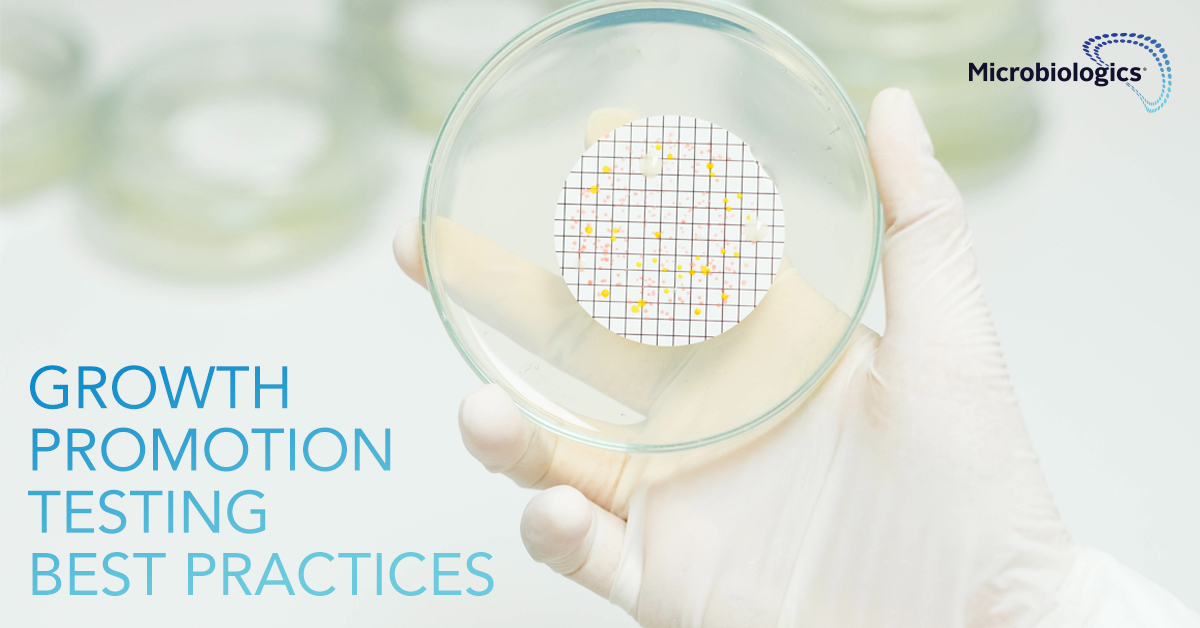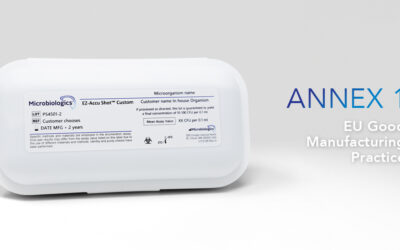When performing Growth Promotion on new batches of media, one of three plating techniques can be used: Spread Plate, Pour Plate, or Membrane Filtration. Each method aids in enumeration of the cells in the inoculum, but each is different in technique. Below we offer our Top 5 Best Practices for each plating method to help you ensure proper growth promotion of your agar media.
Spread Plate Method Best Practices
1. Avoid the edge. Contact with the edge of the plate can introduce contaminates to the agar. Avoid touching the edge of the plate with the loop while streaking or inoculating the agar with the swab.
2. Keep the agar dry. Make sure the agar plates are free of droplets of condensed moisture. If moisture is present, leave the plates at room temperature overnight or place them in a laminar flow hood to dry.
3. Spread the inoculum evenly. Use a sterile spread such as a loop, T-shape spreader, or L-shape spreader to evenly distribute the inoculum over the surface of the agar. This will help the colonies be easily counted and prevent clumping.
4. Keep the inoculum small. Larger volumes of inoculum will take longer to soak into the agar and may cause colonies to get stuck or grow on the edge of the Petri dish. Aim to use volumes of 0.1ml or less.
5. Don’t use agar straight from the fridge. Pre-warm the agar plates to room temperature before use. Remove them from refrigerated storage a few hours to even the night before use to ensure they have equilibrated.
Pour Plate Method Best Practices
1. Keep the agar warm, but not too warm. Keep the molten agar in the water bath for no more than three to four hours. Don’t pour the agar until it has cooled to <50°C (preferably 44°C to 46°C).
2. Melt agar only once. Don’t re-melt the agar. Agar should only be melted one time.
3. Decrease the risk of contamination. Pour plates in a laminar-airflow cabinet to prevent airborne contamination. When pouring multiple plates, flame the mouth of the flask before moving on to the next plate to reduce the risk of contamination.
4. Be cognizant of microbial respiration. Some microorganism species, such as obligate aerobes, may recover better on spread plates than pour plates due to the slightly anaerobic atmosphere created within the layers of agar. When growing these strains, it is recommended to verify counts with a spread plate.
5. Be patient. Most plates will require and extra 24 to 48 hours incubation time before the plates can be read. For example, most bacterial species can be read at 48-72 hours instead of 24-48, while yeasts and molds can take 5-7 days instead of 3-5 days.
Membrane Filtration Method Best Practices
1. Prep the filter. Rinse the filter with about 50 to 100ml of rinse water/fluid prior to adding the microorganism.
2. Check your pore size. Make sure the pore size of the filter is small enough to not let microorganisms pass through. Make sure to use a filter with a pore size of no more than 0.45µm.
3. Rinse the sides of the funnel. After adding the microorganism, rinse with 50 to 100ml of sterile rinse water/fluid, making sure to pay attention to the sides of the funnel. If you are able, rock the filtration apparatus from side to side to swirl the rinse water within the funnel to remove cells that may have adhered to the sides of the funnel.
4. Keep it sterile! Membrane filtration is very sensitive and can pick up contaminants easily. Make sure your funnels, rinse fluids, and forceps are sterile before growth promoting your media.
5. Plate in parallel. Although sensitive, membrane filtration tends to recover less of the microorganism in a suspension than the spread plate or pour plate methods. This can be due to different factor such as cells adhering to the sides of the funnel. Until your technique is perfected, we, just like the USP, recommend running a plate in parallel using the spread plate technique to see if there is a reduction in recovery.
For more best practices while performing Growth Promotion Testing, check our Growth Promotion Test Guides!
- Growth Promotion Test Guide for Microbial Enumeration Tests
- Growth Promotion Test Guide for Tests for Specified Microorganisms
- Growth Promotion Test Guide for Sterility Tests
- Growth Promotion Test Guide for Test for Burkholderia cepacia Complex
Sources
United States Pharmacopoeia. USP43-NF38. <61> Microbial Enumeration Tests. 2022
United States Pharmacopoeia. USP43-NF38. <62> Tests for Specified Organisms. 2022
United States Pharmacopoeia. USP43-NF38. <60> Test for Burkholderia Cepacia Complex. 2022
United States Pharmacopoeia. USP43-NF38. <1227> Validation of Microbial Recovery From Pharmacopeial Articles. 2022






0 Comments